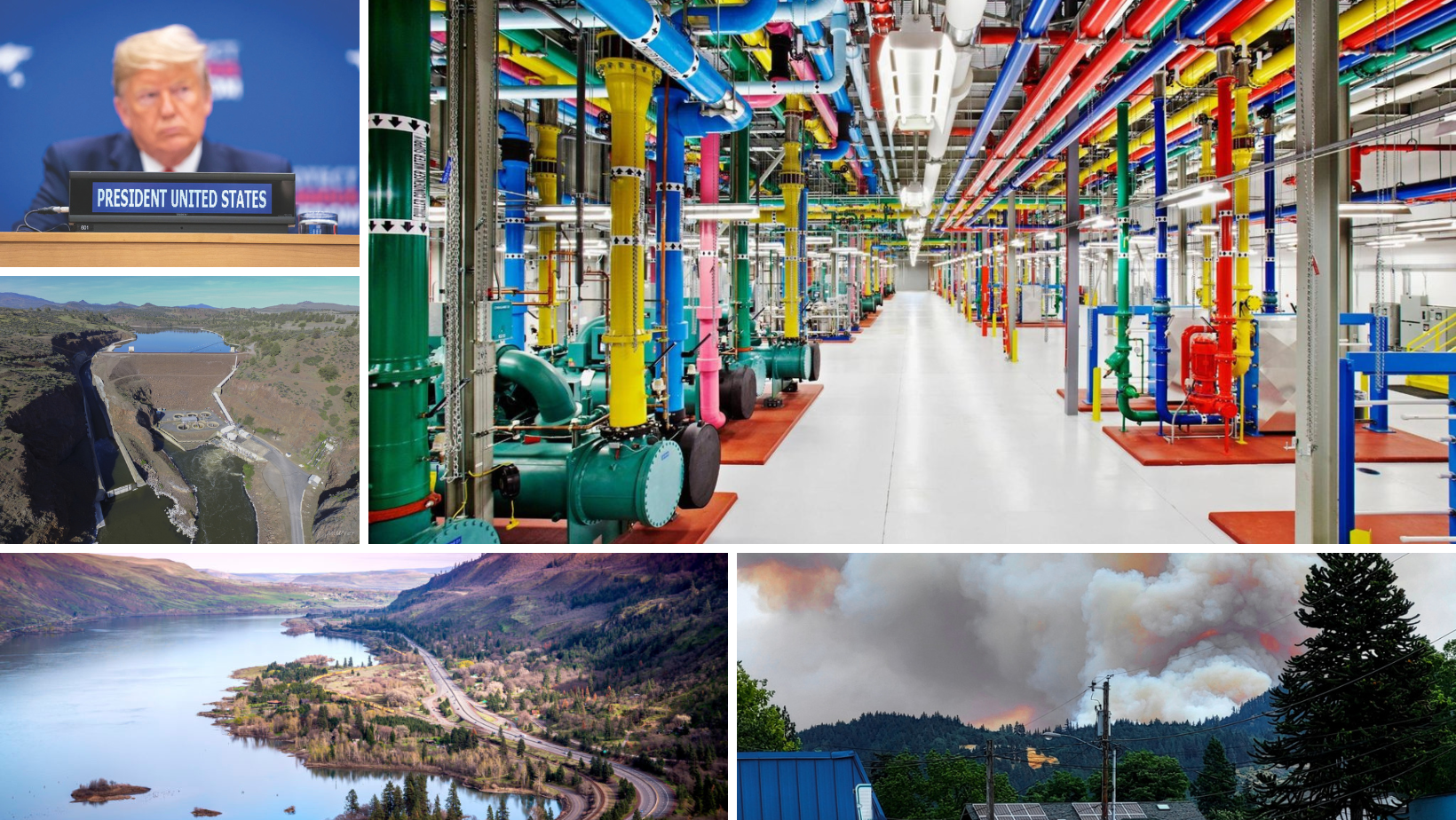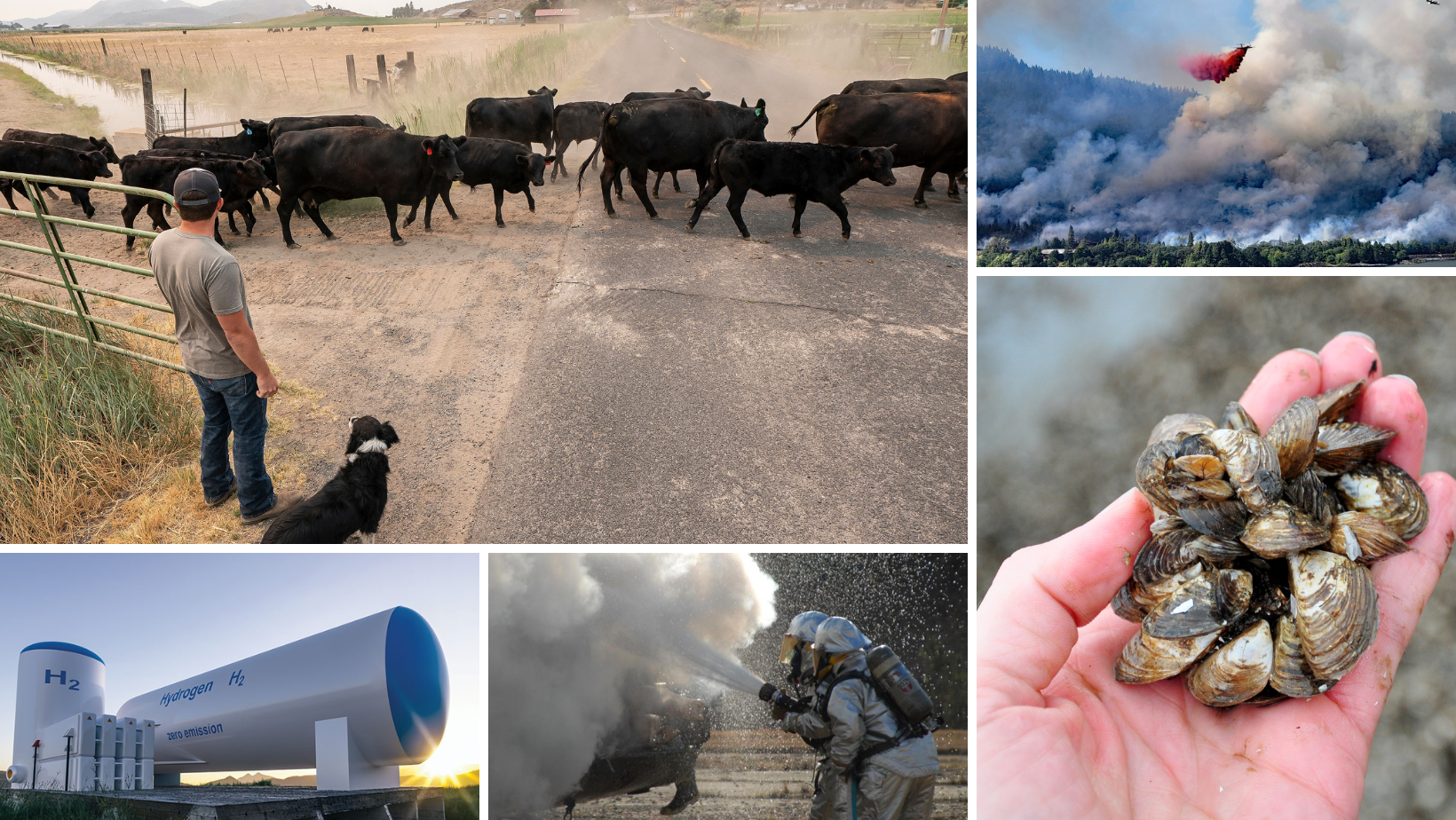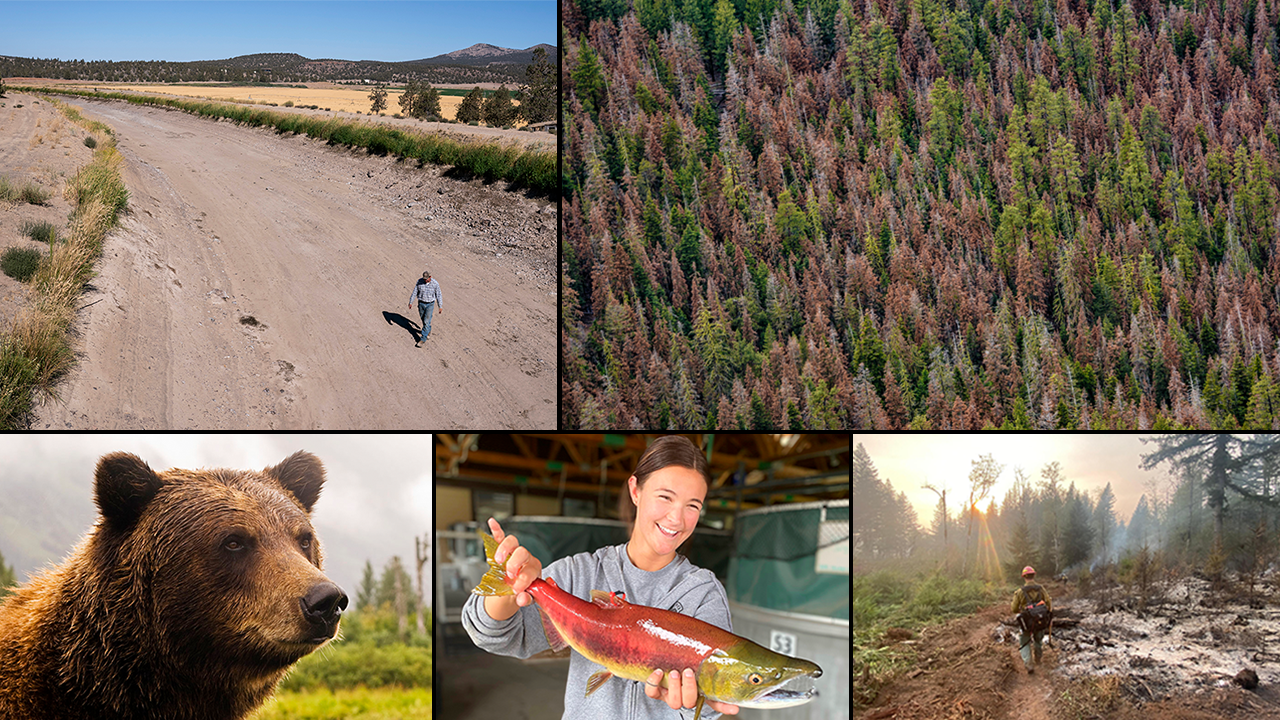Twelve months ago murder hornets were as obscure as social distancing. Those weren’t the only surprises 2020 delivered

By Chuck Thompson. December 10, 2020. In what might have been the most improbable environmental moment of any other year in the Pacific Northwest, on May 20 a lone wolverine was spotted on Long Beach Peninsula on the Washington coast.
That was pretty cool. So was the February report that demolition of the infamous Plutonium Finishing Plant at the Hanford Nuclear Reservation in Washington had after 20 years finally been completed—the facility nicknamed “Z-Plant” produced two-thirds of the nation’s Cold War-era plutonium for nuclear weapons, and left behind radioactive and other highly contaminated materials.
But in a year that gave us everything from sheltering-in-place to a U.S. president hell bent on razing as many environmental protections as he could put an executive order to—yet who also signed the universally applauded, bi-partisan Great American Outdoors Act, permanently funding the Land and Water Conservation Fund and addressing backlogged maintenance at national parks—even that inspiring wolverine and end-of-an-era moment at Hanford couldn’t crack our list of biggest environmental stories of 2020.
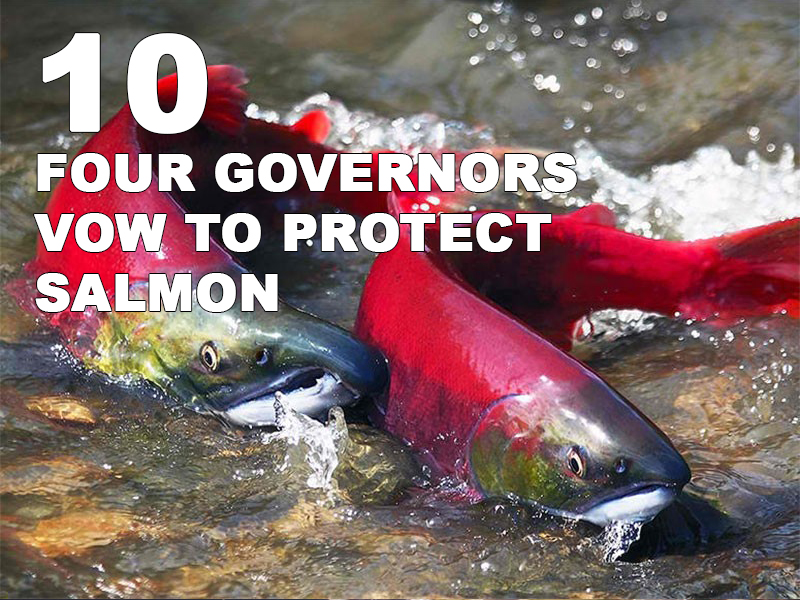
Sockeye salmon/USFWS
In October, the governors of Idaho, Montana, Oregon and Washington pledged in a joint letter to work together to rebuild salmon and steelhead stocks in the Columbia River Basin. Great, but the decree lacks teeth and its impact remains to be seen. The governors acknowledged differences regarding conservation approaches and didn’t address this year’s federal government decision to maintain operations at four controversial dams on the lower Snake River that imperil salmon throughout the Basin.
MORE: Snake River Stranglehold series examines the environmental impact of dams on the lower Snake River
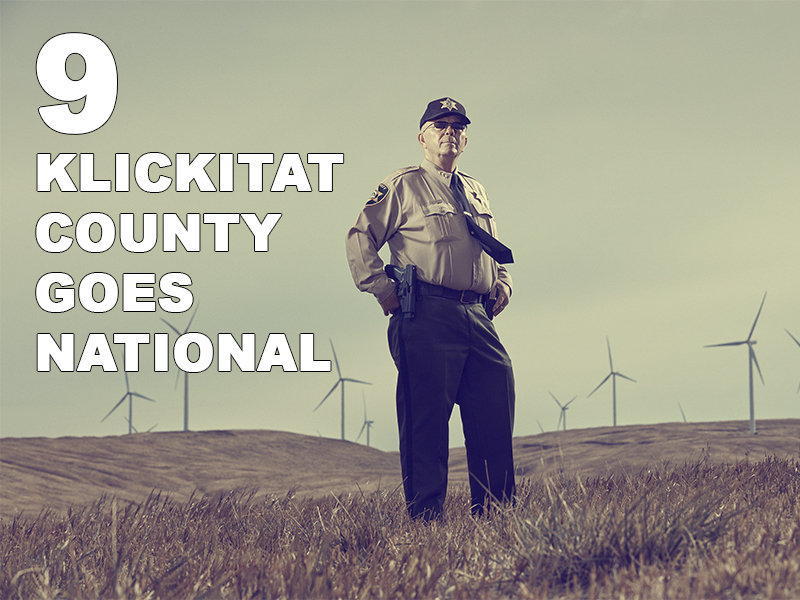
Sheriff Bob Songer/Klickitat County
In May, a lengthy feature in The New Yorker nosed into reactions of residents of Washington’s Klickitat County (population 22,425 in an area the size of Delaware) to the COVID-19 pandemic and “constitutional sheriff” Bob Songer’s apparent reluctance to enforce state-mandated shutdown orders. In September, in what would become Columbia Insight’s most widely read story of the year—drawing eyeballs from almost all 50 states and from Austria to Australia—we reported on a volunteer posse in the county killing at least 16 cougars Songer deemed a threat to public safety. A condensed version of that story will appear in the January 2021 issue of Men’s Journal magazine.
MORE: 16 and counting: Inside a Washington community’s war on cougars

BC Gov Photo (2019)
The veil of secrecy over ongoing U.S.-Canada Columbia River Treaty negotiations has made covering the talks difficult. On June 30, for example, the U.S. State Department and government of British Columbia surprised followers with a pair of press releases announcing June meetings between delegations from both countries. The light-on-details statements were surprising because few people even knew the tenth round of treaty talks, held via web conference, had already taken place. Lack of information doesn’t negate the importance of negotiations around a treaty in clear need of updating, and whose flood risk management provisions will automatically change in 2024 unless both sides forge a new agreement.
MORE: How and why to fix the U.S.-Canada Columbia River Treaty
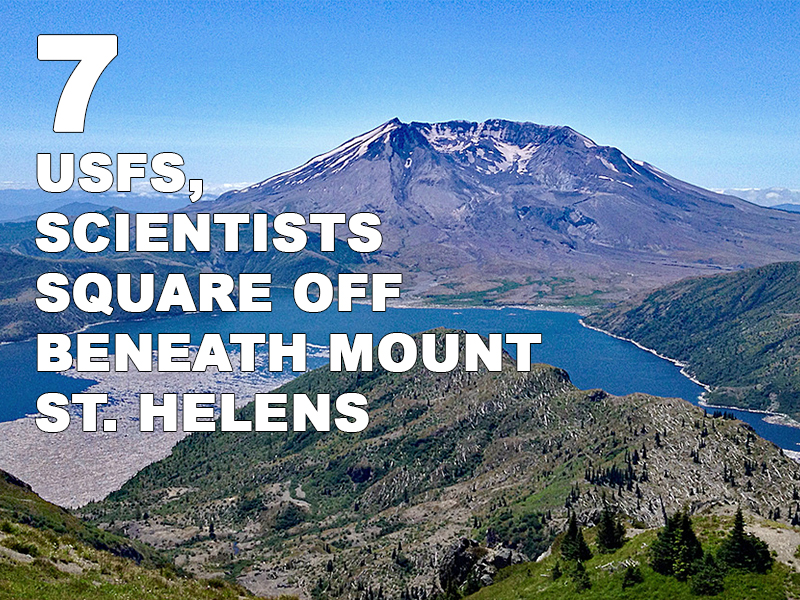
Spirit Lake/Eric Wagner
To address the threat of a future catastrophic flood from rising waters in Spirit Lake, the U.S. Forest Service proposed building a 3.4-mile-long road through the heart of the Pumice Plain at Mount St. Helens National Volcanic Monument. The road would allow the transport of heavy equipment to upgrade or replace a failing tunnel designed to safely drain water through volcanic rock around the lake. The scientific community vehemently opposed the road, saying it would destroy part of one of the world’s great natural laboratories, created after the 1980 eruption of the volcano. The USFS currently says it’s “developing a collaborative strategy to create more sustainable and safer options for long term management of Spirit Lake Outflow.”
MORE: A new road at Mount St. Helens? Scientists see another disaster
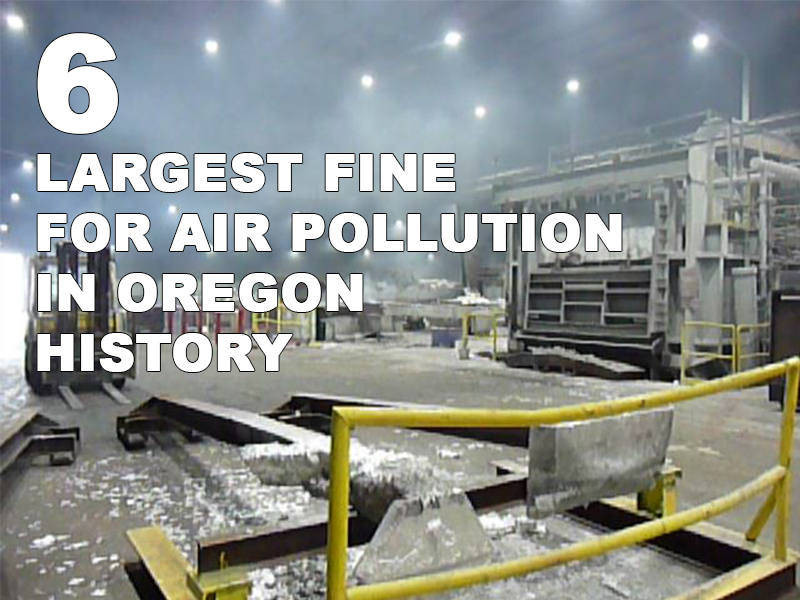
Hydro Extrusion plant in The Dalles/Oregon DEQ
The year got off to an expensive start for Norway-based Hydro Extrusion USA when the Oregon Department of Environmental Quality and U.S. Environmental Protection Agency slapped the aluminum recycler with a $1.3 million fine in January for violations of the Clean Air Act. The agencies found the company “operated with flagrant disregard” of environmental laws at its plant in The Dalles when it processed contaminated scrap, or “dirty charge,” and failed to comply with other safety regulations for more than a year.
MORE: Pollution from aluminum still an issue in The Dalles
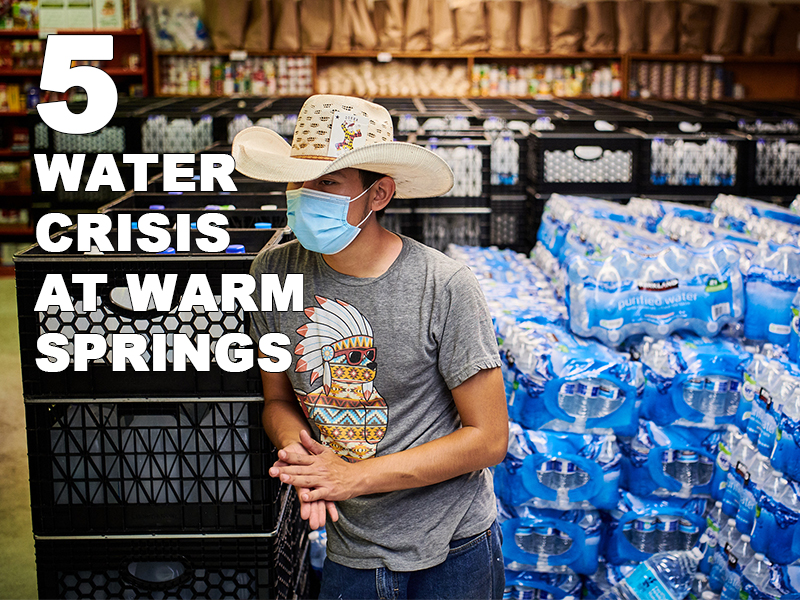
Hazen Bruised Head of Warm Springs emergency management team/Photo by Leah Nash
Residents of Oregon’s Warm Springs Reservation have been under intermittent boil-water notice for years due to lack of safe drinking water. But this past summer, following a surge in COVID-19 infections, parts of the reservation lost running water completely. Tribal officials dispensed water from roadside tanks, and arranged portable toilets and mobile showers. The reservation’s outdated water system failures are in part due to more than $80 million in unmet infrastructure needs. One estimate says a new water treatment facility will cost $200 million. In July, after four weeks without safe drinking water at Warm Springs, the Oregon Legislature approved $3.6 million in water aid for the reservation.
MORE: Indigenous Issues series examines environmental issues impacting tribal lands and communities

Jurgen Hess
Yes, as we reported in April, skies really were less hazy, due in part to stay-at-home orders keeping many cars off the road. And wildlife showed its appreciation of campground and trail closures by ranging with a greater sense of provenance. Then again, as soon as parks re-opened, cooped-up humanity returned to the outdoors with a vengeance, depositing what was described as record levels of garbage on public lands, leading the Forest Service to declare “a crisis level of concern at recreation sites throughout the Columbia River Gorge.”
MORE: Only one thing will preserve post-COVID environmental gains
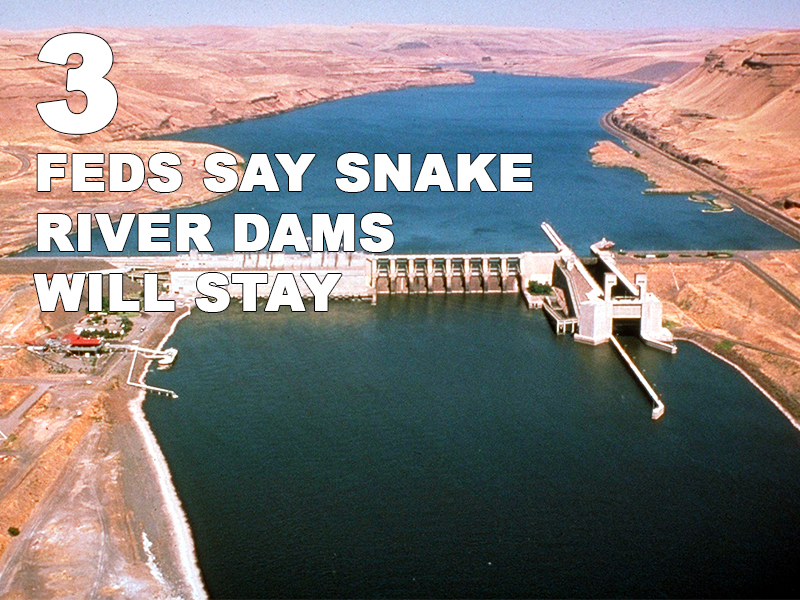
Lower Monumental Dam/USACE
In September, following a four-year, court-ordered environmental study, the U.S. Army Corps of Engineers, Bureau of Reclamation and Bonneville Power Administration announced they will continue operations at four controversial dams on the lower Snake River, while increasing the amount of water spilled over them in spring to aid juvenile fish heading downstream. In October, a coalition of 11 environmental and fishing organizations announced its intent to sue the federal government based on its opinion that the decision violates the Endangered Species Act. Despite the government pronouncement’s air of finality, this won’t be the last chapter in the long fight between dam proponents and groups that want the dams breached to aid salmon recovery.
MORE: Video: This 13-year-old environmentalist will amaze you

Mobilus In Mobili
In November, the New York Times published a list of more than 100 environmental protections the Trump administration had either successfully rolled back or was in the process of dismantling, a mission largely carried out by the Environmental Protection Agency. This year, Idaho and Montana courts blocked a federal move to open 9 million acres to oil and gas drilling that would weaken habitat protections for sage grouse. In response to a decision to roll back water quality standards approved in 2016, Washington Department of Ecology Director Laura Watson said, “It is unconscionable that EPA would diminish water quality standards … We have challenged this illegal action in court.” Public fury greeted the Forest Service’s announcement of its intent to shelve a rule preventing logging companies from cutting down the largest trees in eastern Oregon. A chorus of environmental groups denounced a proposal to expand hunting and fishing at wildlife refuges and fish hatcheries including 15 locations in Idaho, Oregon and Washington, and two more in northwestern Montana. Other administrations have cut environmental protections, but as the Times reported, “the scope of actions under Mr. Trump is ‘fundamentally different.’”
MORE: The secret power of old growth

ODW/Roberto Orellana
The numbers are staggering. In December, the National Interagency Fire Center reported 52,934 wildfires had burned 9,539,554 acres in 2020, mostly in Western states. That’s more than double the acreage burned in 2019. In Oregon alone, 2,027 wildfires burned 1,221,324 acres. Economic costs are incalculable. Health effects—dense smoke laid a stifling orange blanket over cities for weeks—may never be known. But the most visceral toll was seared in the eyes of those on the front lines struggling to save irreplaceable natural treasures, the tens of thousands forced to evacuate their homes and the rest of us who will spend the rest of our lives surrounded by the visible scars of the most traumatic and destructive fire season in memory.
MORE: He evacuated. Hours later the cabin burned
From reporting on firefighters dealing with COVID-19 protocol at Oregon’s Mosier Creek Fire to assessing the impact of fires on wildlife to surveying the destruction of the Big Hollow Fire in Washington, Columbia Insight provided on-the-ground reporting throughout the fire season. But perhaps the most moving story we published this year was the firsthand account of a Portland fisherman rousted in the middle of the night from his rental cabin on Oregon’s McKenzie River and forced to flee from the onrushing Holiday Farm Fire.
Columbia Insight will continue reporting on the most critical environmental issues affecting the Columbia River Basin in 2021.
Chuck Thompson is the editor of Columbia Insight.




